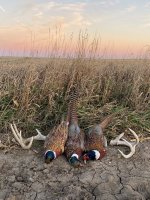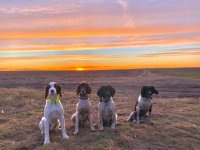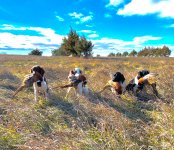Spent 3 days in SD, mix of public and private. I am generally an optimistic person so I wasn't reading too much into the negative reviews and forecasts on here. I'd say overall it was better than the doom and gloom forecasts, but worse than my positive optimistic expectations.
Pheasants: They are obviously still around and better than you can find almost anywhere in the US, but I think the very wide and broad south central region that I focused on was certainly down in numbers compared to my previous years in this area.
Land: On public land I noticed some hayed, but not enough to make me really worry... must really vary based on where you are at in the state. On the private land I hunted, there was a lot less cover than the previous 8 years I've got to hunt this land. Lots of little sloughs and waterways that had always held birds were now gone, planted in crops this year or plowed under. Some of them I was amazed, one slough that I hunt each year always had 1-2' of water in it and full of birds, about 200 yards x 200 yards. This year it was beans and you'd have never guessed it used to hold water in that location.
Overall: If you expect a few man limit by lunchtime, cancel your trip. If you want to have the opportunity to get a few man limit with good dog work and good shooting, then come on out.





